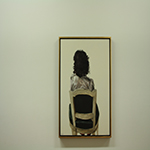Euroacademia Conferences
 Europe Inside-Out: Europe and Europeanness Exposed to Plural Observers (9th Edition) April 24 - 25, 2020
Europe Inside-Out: Europe and Europeanness Exposed to Plural Observers (9th Edition) April 24 - 25, 2020 Identities and Identifications: Politicized Uses of Collective Identities (9th Edition) June 12 - 13, 2020
Identities and Identifications: Politicized Uses of Collective Identities (9th Edition) June 12 - 13, 2020 8th Forum of Critical Studies: Asking Big Questions Again January 24 - 25, 2020
8th Forum of Critical Studies: Asking Big Questions Again January 24 - 25, 2020 Re-Inventing Eastern Europe (7th Edition) December 13 - 14, 2019
Re-Inventing Eastern Europe (7th Edition) December 13 - 14, 2019 The European Union and the Politicization of Europe (8th Edition) October 25 - 26, 2019
The European Union and the Politicization of Europe (8th Edition) October 25 - 26, 2019 Identities and Identifications: Politicized Uses of Collective Identities (8th Edition) June 28 - 29, 2019
Identities and Identifications: Politicized Uses of Collective Identities (8th Edition) June 28 - 29, 2019 The European Union and the Politicization of Europe (7th Edition) January 25 - 26, 2019
The European Union and the Politicization of Europe (7th Edition) January 25 - 26, 2019 7th Forum of Critical Studies: Asking Big Questions Again November 23 - 24, 2018
7th Forum of Critical Studies: Asking Big Questions Again November 23 - 24, 2018 Europe Inside-Out: Europe and Europeanness Exposed to Plural Observers (8th Edition) September 28 - 30, 2018
Europe Inside-Out: Europe and Europeanness Exposed to Plural Observers (8th Edition) September 28 - 30, 2018 Identities and Identifications: Politicized Uses of Collective Identities (7th Edition) June 14 - 15, 2018
Identities and Identifications: Politicized Uses of Collective Identities (7th Edition) June 14 - 15, 2018
Non-Aligned Modernism: Yugoslavian Modernist Art and Cold War Cultural Diplomacy
-
-

-
Presentation speakers
- BojanaVidekanic, Department of Fine Arts, Faculty of Arts, University of Waterloo, Canada
Abstract:
This paper examines aspects of the history of modernism in the socialist Yugoslavia by studying the influence of Cold War cultural diplomacy in Yugoslavian culture and politics of the 1950s and 1960s. More specifically, it does this by looking at the 1956 MoMa exhibition of Abstract Expressionism which legitimized modernist ethos as an accepted political, social, and cultural form during Yugoslavia’s transition from a hard-line Soviet-style state, to a more open, humanist-socialist one. During this transition, Yugoslavia’s elites searched for alternative political, social, and cultural models which were found in idiosyncratic social forms: ideas of non-align movement in its international policies, theories of self-management in internal organization of the state, and non-aligned, socialist modernism in its cultural forms. I argue that the Yugoslavian modernist art developed between socialist political influences and Western cultural hegemony evidenced most clearly by Western cultural diplomacy. A crucial moment in the development of non-aligned Yugoslavian modernism was the arrival of various modernist influences on Yugoslavian cultural scene culminating in the 1956 MoMa exhibition of Abstract Expressionist artwork. The history of this circulating exhibition and its arrival to Yugoslavia is a testament to the efficacy of ‘soft power’ as a political tool in the tense Cold War climate. Yugoslavia’s political establishment gave the final blessing for the country’s cultural transformation towards post-war modernism. This modernism, however, retained specific qualities –– most important of which was its emphasis on maintaining Yugoslavia’s political position of neutrality. My reading of Yugoslavian modernism is therefore one that considers aesthetic and formal shifts, as well as, diplomatic, political, and social influences that formed what I term non-aligned modernism. Soft power of art played a key role in establishing this idiosyncratic art form in a country that used its culture as a way to maintain Cold War neutrality and flex its diplomatic and political muscles on the post-WWII international cultural scene.
-
Related Presentations

"The Antichrist Lives in the West": The United States and Western Europe as Russia's Geopolitical "Other"
- Magda Dolinska-Rydzek

















